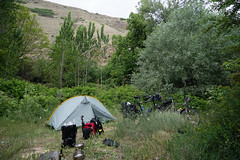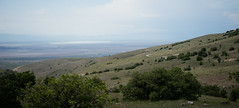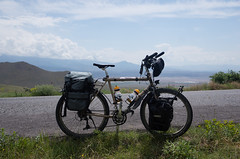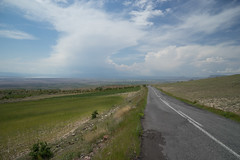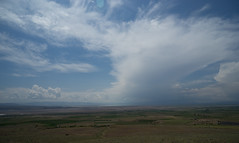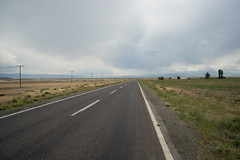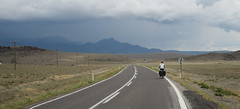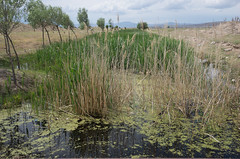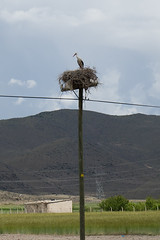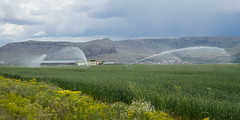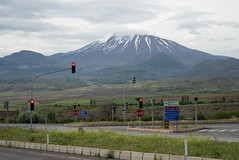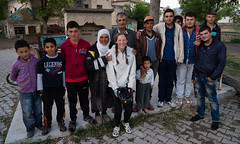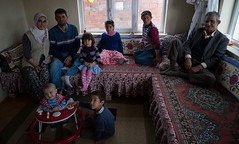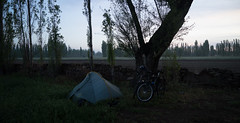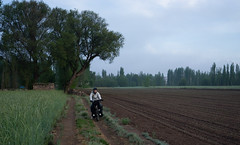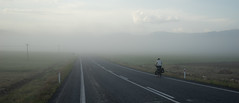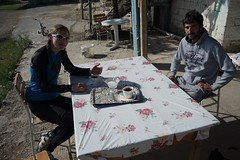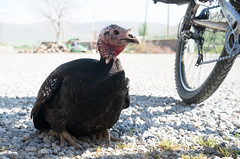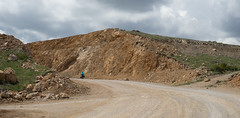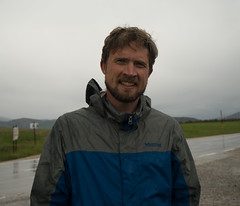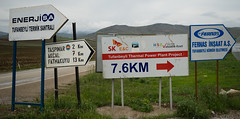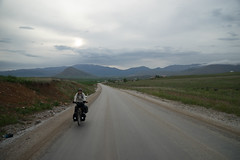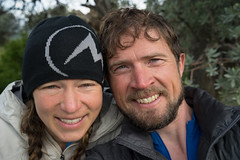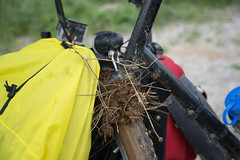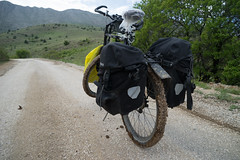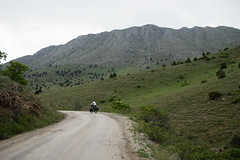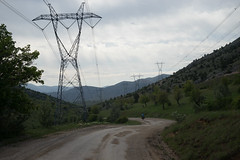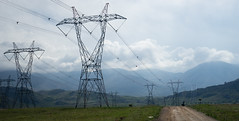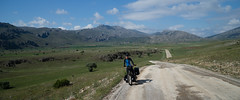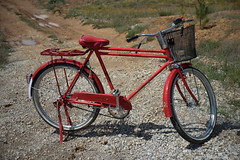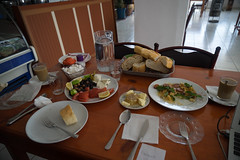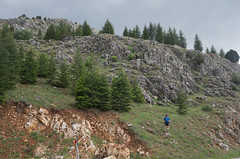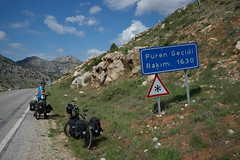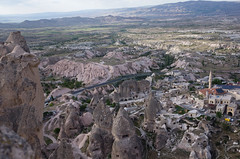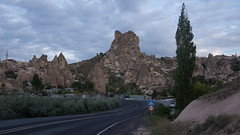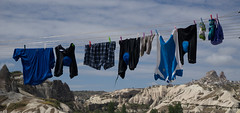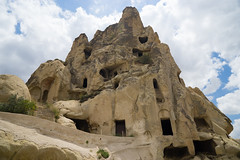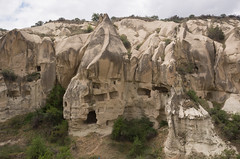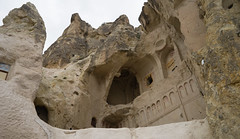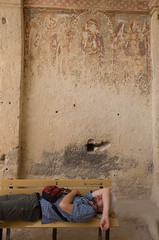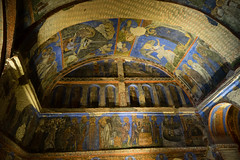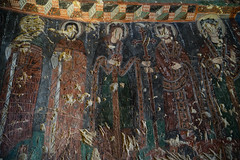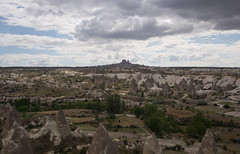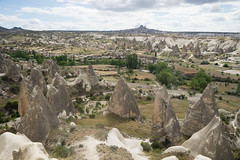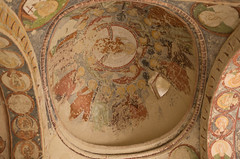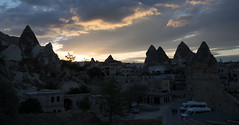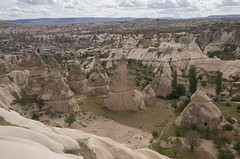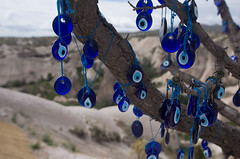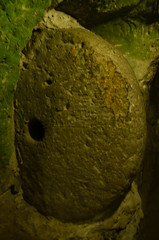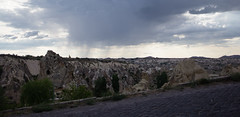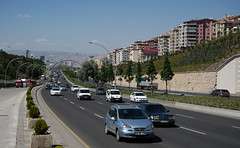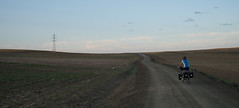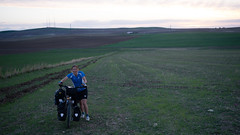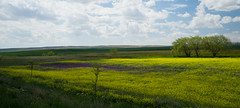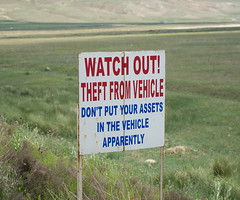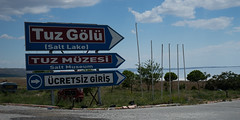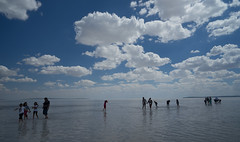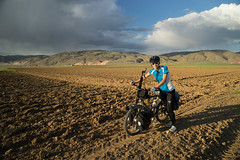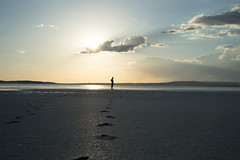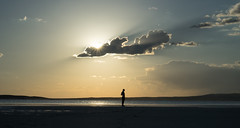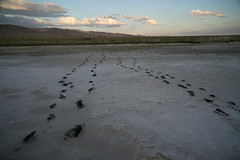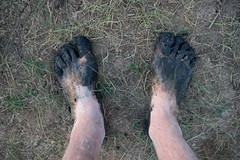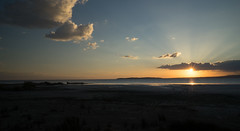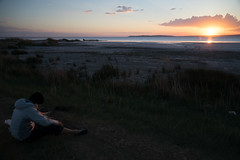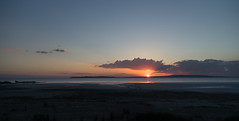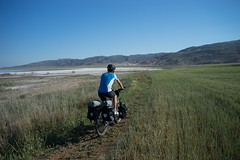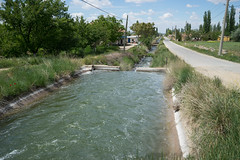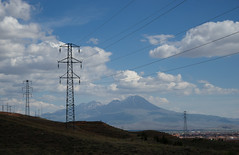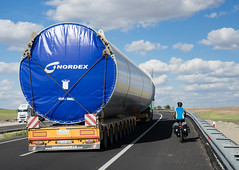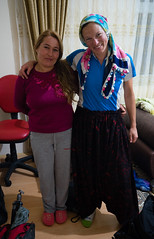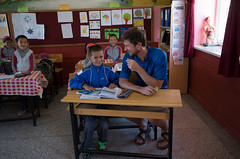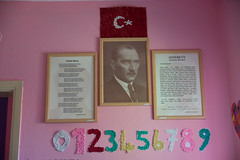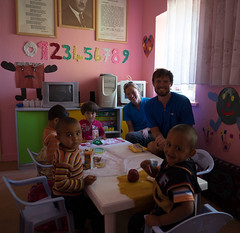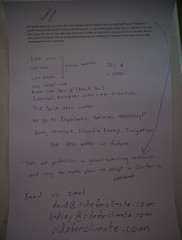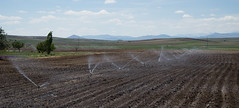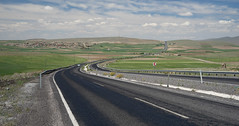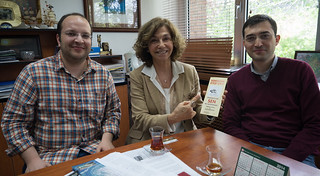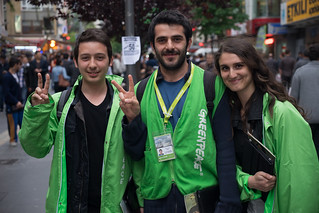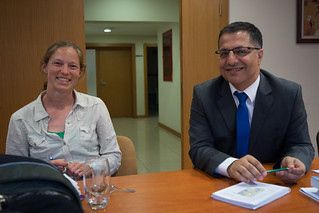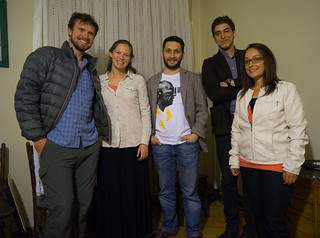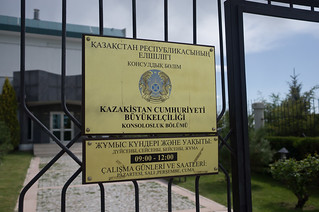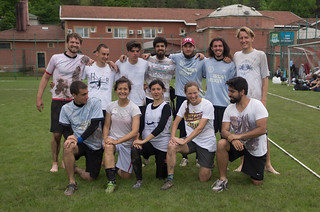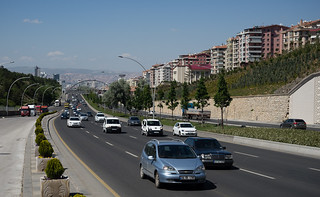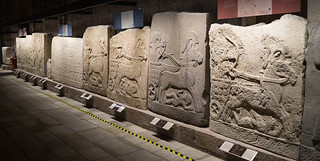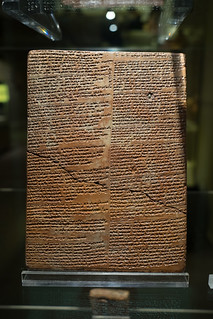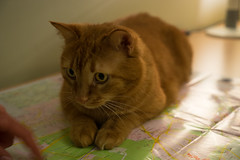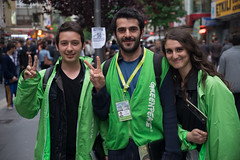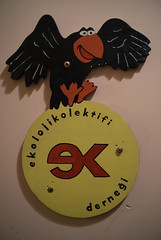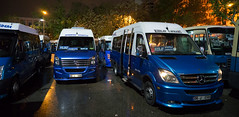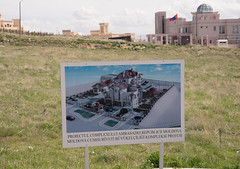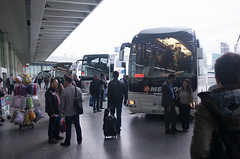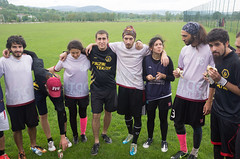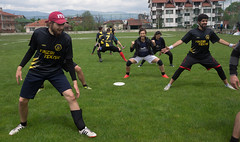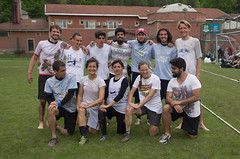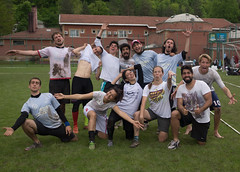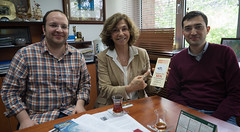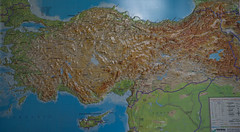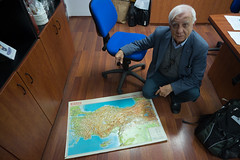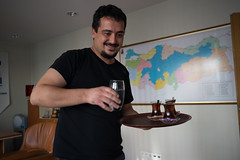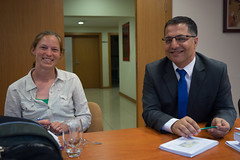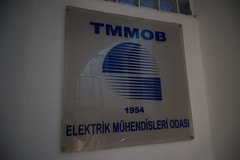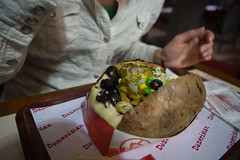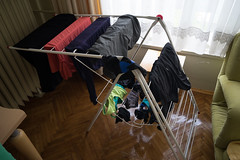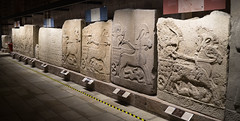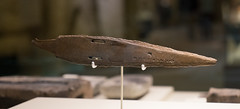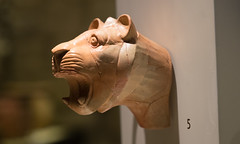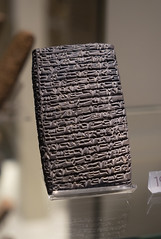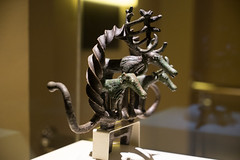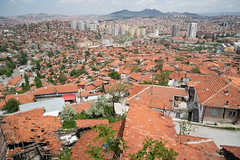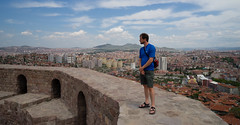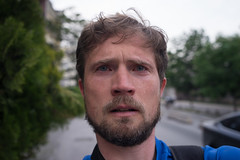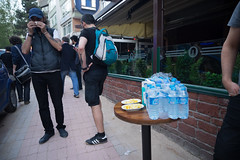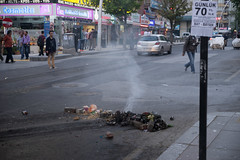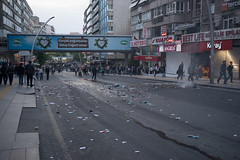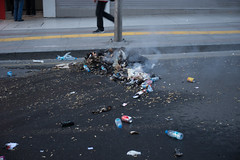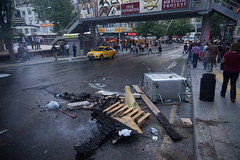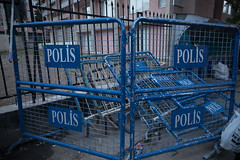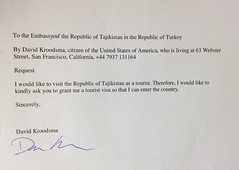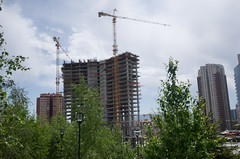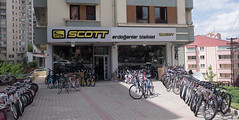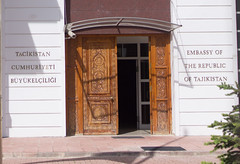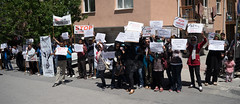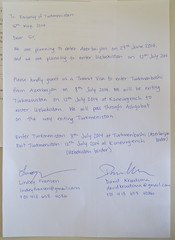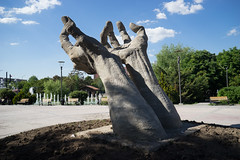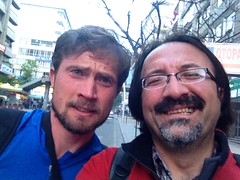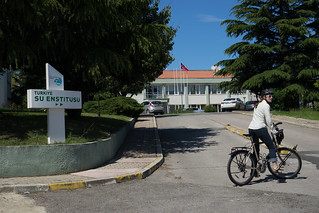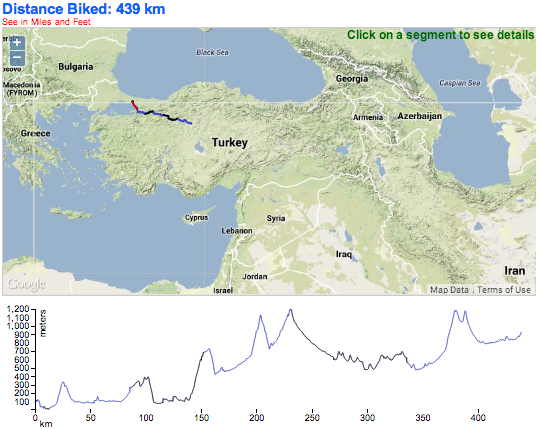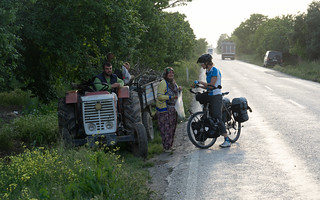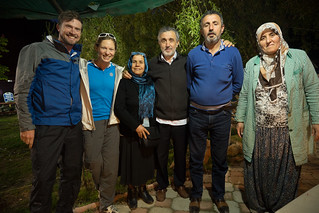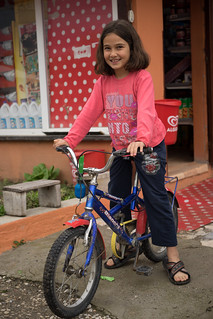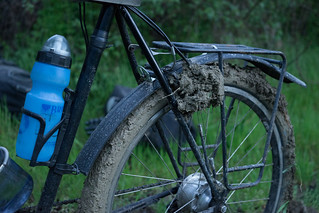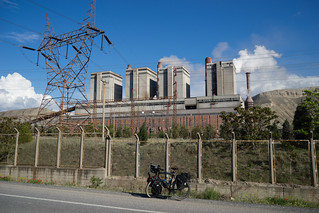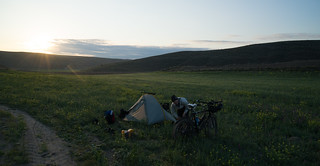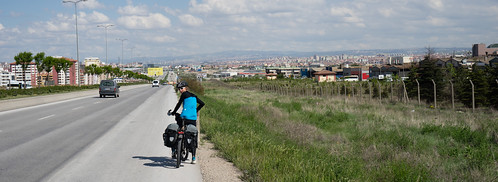Archive for May, 2014
Cappadocia to Gaziantep: Photos
Tuesday, May 27th, 2014Photos from Cappadocia
Tuesday, May 27th, 2014Ankara to Cappadocia: Photos
Thursday, May 22nd, 2014Energy (and Climate) in Turkey, Part II: Interviews in Ankara
Thursday, May 22nd, 2014When in Istanbul, we visited the European Bank for Reconstruction and Development, and learned about how Turkey’s official plan is to expand renewables, nuclear power, coal, and hydropower. This week, in Ankara, we met with a number of advocates and experts, and gained a fuller appreciation for Turkey’s energy and climate future.
We were lucky to have many conversations in Ankara. We met with three members of Ekoloji Kolektifi, an environmental collective, and talked generally about environmental issues in Turkey. We also spoke with Erdal Apaçik, who sits on the board of the Electrical Engineers Chamber, as their organization is opposing nuclear power plants in the country, and we wanted to learn about Turkey’s energy politics. We spoke with professors at ODTU, one of Turkey’s top universities, about sea level rise, changing precipitation patterns, and the effects of climate change on Turkey’s lakes. We met with Onder Algedik, a consultant who has also helped organize events for the local chapter of 350.org (including an awesome bike event a few years ago). And we had dinner with Mustafa Berke, who works on climate issues for WWF in Turkey, and Göksen Sahin, who is the environment policy coordinator and climate policy officer for TEMA (Turkish Foundation for Combating Soil Erosion, for Reforestation and the Protection of Natural Habitats), Turkey’s largest environmental group (they claim 500,000 volunteers, or about one out of every 140 Turks).
We had fewer meetings with scientists than we would have liked, but the basic message was pretty simple: It will get drier and warmer in most of Turkey, affecting ecosystems and water management, and structures built along its long coastline will need to be protected or rethought as sea levels rise. The details, though, are unclear, and the scientists emphasized the uncertainties — we aren’t sure how much precipitation will change, or how quickly sea levels will rise.
From the advocates, what we saw was environmental movements opposing various energy development projects, with the fight against nuclear power and new hydropower plants being perhaps the strongest movements. Turkey currently has no nuclear power, but one plant, developed by Russia, is currently under construction, and another, to be built by Japanese engineers, is mostly approved. Both, however, are delayed. When we were walking through the streets of Ankara, we even saw three Greenpeace activists trying to raise money and gain members. They spoke very little English, but they talked first and foremost about opposing nuclear power.
Our conversation at the Chamber of Electrical Engineers was also interesting. Erdal Apaçik, whom we spoke with, sits on the board of the Chamber’s national assembly. He told us through an interpreter that nuclear power was unsafe, not secure, and expensive, and that the waste problem had not been sorted out. He argued that Turkey has a horrible safety record in different parts of society (and I don’t doubt it — I’ve seen countless construction sites where no one wears a hard hat, and the incident in the Soma coal mine doesn’t boost confidence, either), and that they are also very prone to earthquakes — two strong arguments against nuclear power. He also argued that they had to use outside technology and uranium, instead of using Turkish resources. When we asked Erdal what types of energy projects should be built, he said that energy efficiency was the biggest resource, and added that renewables such as solar and wind should also be developed.
Onder Algedik, who has worked with 350.org and also consults for the World Bank, told me how he organized 50 people to lobby members of the Turkish government to act more aggressively on climate change. Whereas in Istanbul I was told that the best Turkey could do in the next two decades was to grow its emissions more slowly, Onder told me that they could actually cut emissions by 15 percent. His explanation was similar to Erdal’s: Turkey is horribly inefficient, and can save immense amounts of energy, thus cutting emissions. (After our interview, I had this run in with tear gas).
Over dinner with Mustafa Berke of WWF in Turkey and Göksen Sahin of TEMA, we had an informal conversation about energy issues in the country. We talked a good deal about hydropower plants. The country has plans on the books to almost double its hydropower capacity, but almost all new power will come from small dams and run-of-the-river style hydropower. The run-of-the-river plants, in theory, are supposed to be better for the environment, as they leave water in the river. In practice, some of them have actually taken all of the water out of the river (when I spoke with the president of the Turkish Water Institute in Istanbul, he acknowledged that many of them had been poorly implemented, even if they were good designs).
Mustafa explained that the number of power plants “on the books” is much, much greater than the number that will be built – some may not pass their environmental reviews, and many face strong public opposition. We got the impression from most of our conversations that opposition is usually ignored – for example, the dam on the Ilisu River that will flood the current and historical town of Hasankeyf, has gone forward despite local and international pressure. However, people seemed confident that many of these projects will be built – some advocates in the northeast of Turkey, where numerous new reservoirs are planned, believe that only one in seven of the government’s planned dams will be built.
In the meantime, the country is busy building more coal and natural gas infrastructure. Natural gas is expensive and puts the country at the mercy of Russia, which provides a large quantity of the country’s gas. And coal is perhaps the absolute worst energy source for climate change — in addition to its more immediate human cost, as shown by the recent mining disaster. There is some opposition to these sources of energy (and the opposition to coal might be stronger after the recent disaster), but as some of the advocates told us, there is less opposition to them than to nuclear and hydropower.
The question that Lindsey and I keep asking ourselves is this: What is good for Turkey, and what is good for the world? People understandably don’t want a nuclear power plant in their backyard, or for their land to be flooded or their rivers destroyed. But a country like Turkey is likely going to need more energy, even if it manages to become far more efficient. Turkey contributes only about one percent of global emissions. Why should they sacrifice their rivers and towns, and take risks with nuclear power that many in the US are unwilling to accept, for the global good?
Obviously, we should all act together – every coal plant built in Turkey, or anywhere, locks in a certain amount of carbon emissions for several decades. But these environmental movements feel so local. And talking with everyone, it seems that climate change is extremely low on everyone’s list of priorities. And with all the talk about efficiency and the country’s vast solar potential, why are coal, gas, hydropower, and nuclear being pushed so aggressively? We will continue to answer these questions as we travel.
A Week in Ankara — Frisbee, Climate Experts, More Protests, and Visas
Thursday, May 22nd, 2014We’ve been doubting that we’re prepared for this journey. Our training was particularly lax: I biked less in the month before we left California than during any month in the past two years. The chart below shows the number of miles I biked, by month, in the last year. Note that April has almost zero miles of biking.
We figured we would be able to train on the road. As we learned in the first five days of riding, that can hurt. A lot. Also, in our first few days of riding, we lost a tent pole, our stove stopped functioning, and my seat post tube became damaged (the teeth that keep the seat level have worn out).
We also didn’t prepare much with regards to visas. Unlike in Latin America, where you can just show up at the border of most countries, show an American passport, and enter when you please, many countries in Asia require some type of visa. The Central Asian countries — Uzbekistan, Tajikistan, Turkmenistan, Kazakhstan — all require date specific visas, usually lasting about a month (and it’s nearly impossible to get a regular tourist visa for Turkmenistan without booking a tour, so most bicycle tourists get a transit visa, which allows only five days, set ahead of time). As a result, we had to decide exactly when we will be biking through each country before we applied for our visas.
We spent Thursday, the day after we arrived in Ankara, doing what we probably should have done months ago, but didn’t feel prepared to do without a few days of biking under our belts to gauge our pace — planning out exactly when we will be in each country. We went to the embassies on Friday morning.
One problem: Friday, May 9th, is a holiday in most former Soviet nations. All the embassies were closed. So we would have to wait until Monday, and then wait another four or five days for processing — if everything went according to plan.
Faced with more than a week in Ankara, we left town. Someone we had contacted on couchsurfing invited us to join a frisbee tournament two hours away, and we picked up with a team made up largely of college students from Istanbul. Ultimate is relatively new in Turkey, but the tournament was still good fun (but wet!). I felt good that we could still run around and play with people a decade younger than us, although we were both suffering afterwards and grateful for more time off the bike.
Back in Ankara, we spent the week running errands, visiting embassies, meeting with local climate experts and activists, and making an awesome interactive map of our trip. The next blog entry addresses what we learned from our meetings, and Lindsey plans to write a guide to getting Central Asian visas in Ankara (once we see how the final 2 – Turkmenistan and Azerbaijan – work out through online means). In the meantime, there are several great resources out there already — in particular, we relied on Minwah’s blog, minimeanderings, and carivanistan.com). Note that the rules keep on changing, or are applied inconsistently, so what worked for us may not work for someone else. Still, we found it helpful to have up-to-date information and tips as we planned our attack.
We stayed with Deniz, a host we found through warm showers, and Deniz’s three cats. Deniz runs an adventure group, the Rock Lizards, and was kind to host us, even though he is defending his PhD in just a few weeks and was working until late every night. He has suggested that he might be able to bike with us in Georgia for a little while in a month, and we would be very excited if that works out.
We were also in Ankara during the mining disaster, and I witnessed first hand the protests and tear gas. You can read more about my experience here.
We enjoyed our time in Ankara, but it is perhaps one of the worst cities for biking that I have ever visited. There aren’t many good secondary roads connecting different parts of the city, there’s no bicycle infrastructure, and the drivers are absolutely crazy. Fortunately, the public transit was incredibly efficient, and we used the copious mini buses to get around.
We spent about only half a day being tourists, which we used to visit Ankara’s Museum of Anatolian Civilizations and visit the Citadel. The museum reminded us that we are biking through a region with thousands and thousands of years of history. We are extremely excited to soon bike across the Tigris and Euphrates rivers, the fertile crescent where humanity first built cities.
By Friday, through a combination of persistence and luck, we had visas for Uzbekistan, Tajikistan, and Kazakhstan, and we had applied for visas to Turkmenistan and Azerbaijan. Also, after visiting three bike stores, we found a seat post tube to replace the one on my bike. Our host, Deniz, gave us a tent pole to replace the one that we lost, and Lindsey managed to fix the stove by reading the directions (and cleaning it out).
We might finally be prepared for this trip. Now we’re going back on the road to find out. In many ways, we feel like the trip is now, finally, beginning.
Photos from Ankara
Saturday, May 17th, 2014Mining Disaster, Protests
Thursday, May 15th, 2014Last week, I talked with Adonai Herrera-Martínez of the European Bank for Reconstruction and Development, and he told us that Turkey was likely going to increase its use of coal in the next decade. This is because the government wants to promote “energy independence,” and the country has a lot of coal.
Yesterday, when walking around Ankara, we noticed that the flags were at half mast. We later learned that a major mining accident had killed over 280 coal miners, and that another 140 were still trapped underground.
That evening, I met with a climate organizer and consultant downtown, to interview him about the climate movement in Turkey. I noticed people marching in the streets, carrying banners. My contact told me that people were showing solidarity with the miners, and protesting the government for not requiring safer conditions. (I later learned that the prime minister made some regrettable remarks about the accident, and that one of his aides kicked a protestors — both of which further upset people frustrated by the government.) Soon, protesters were running by the coffee shop, and a cloud of tear gas and police officers were close behind. I took some video of the scene, which you can see below. The climate advocate who I interviewed told me that the reason that there is trash on fire is that the protestors lit the fires to help clear the tear gas.
This mining accident was a major tragedy, and yet another example of the costs of fossil fuels. It is also sad that the result of this tragedy is more unrest, and more displays of force against protestors.
Turkey and California: A Water Perspective
Thursday, May 15th, 2014A few days after arriving in Istanbul, we biked to the Turkish Water Institute, a think tank established as a special funded entity under the Ministry of Forestry and Water Affairs. We took a ferry over to the Anatolian side of Istanbul, then slowly wound our way over and under highways to reach the Institute on our bikes.
Turkey and California have a lot in common when it comes to water. While Turkey is twice as large as California (783,562 km² versus 423,970 km²), it’s also about twice as populous (75 million versus 38 million people), meaning they have similar population density. Both California and Turkey are challenged by the spatial and temporal distribution of precipitation. They have a Mediterranean climate, meaning rainfall is very seasonal, with wet winters and dry summers. Their populations are also largely centered away from where most of the rain falls. These two factors mean that storage and transportation play a large role in water management and use. Turkey and California also have a fairly similar breakdown of how water is used by the major sectors.
Agriculture is a major water user, and both Turkey and California are large producers and exporters of a variety of crops. Like California, Turkey produces a range of fresh produce and nuts. Most of its arable land is dedicated to grains – especially wheat – and it is also a major producer of cotton.
Another similarity is that both Turkey and California have experienced serious drought this year. In January, Istanbul had only about 100 days of water reserves, according to the Center for Middle Eastern Strategic Studies. The city is supplied with water from 10 dams in the Marmara and Black Sea regions, and the water levels in these reservoirs were all at their lowest point in six years, around 35 percent capacity, and in January three were not able to supply any water. However, it appears that officials were not terribly concerned, and there was even some disagreement among the ministries about whether there was enough water in reservoirs to meet electricity demands. California is facing similar shortages. On January 17, the governor declared a drought state of emergency, urging consumers to conserve water and stating that the State Water Project, a system of reservoirs and aqueducts that moves water across the state to urban and agricultural consumers, would not be able to provide any deliveries this summer. More recently, releases have been increased to five percent of normal, which is still the least amount of water that has been provided since deliveries began in the 1960s.
Despite these features in common, there are a number of key differences in water supply and management in California and Turkey. First, Californians use much more water than Turks. Depending on how you measure it, per capita consumption of water in Turkey in 2008 was 112 liters (30 gallons) to 215 liters (57 gallons) per day (the lower figure is billed water consumption, and the higher figure is total water abstracted divided by population – this indicates that half of the water is lost before it reaches the customer, or is not billed). In California, per capita water consumption in 2010 was 460 liters (124 gallons) per day (I believe this is billed water consumption). These figures reflect water delivered to individual consumers (not, for example, embedded water in food consumption, or industrial water use divided over population). Based on these numbers, Californians use two to four times as much water as people in Turkey.
Turkey and California are also at very different stages in ‘developing’ their water resources. As mentioned above, infrastructure to store and transport water is important in places where people live far from where rain falls, and where precipitation is highly seasonal. Istanbul has a long history of moving and storing water, dating back to the city’s founding as Constantinople, the eastern capital of the Roman Empire. We visited the Basilica Cistern and the Valens Aqueduct and were impressed with the massive scale of these projects: the aqueduct, itself about one kilometer long but part of a network that ultimately was over 250 km long, moved water from the hills near the city to over 100 underground cisterns. The Basilica Cistern, now a tourist attraction in the Sultanamhet neighborhood, is approximately 9,800 square meters (105,000 square feet), and can hold 80,000 cubic meters (2,800,000 cubic feet) of water. Constructed during the 3rd and 4th centuries, the Cistern supplied water to the Topkapi Palace and continued to supply water for the city after Ottoman times.
Overall, Turkey has come to large water projects more recently than California has. There are at least 1,400 dams in the State of California, with a combined reservoir capacity of over 45 million acre-feet and over 130 power projects. Most of these dams were built decades ago. Dam-building is now almost non-existent, partly due to having run out of places to put them – only a few rivers are undammed from the mountains to the ocean, and we have used most of our good reservoir sites. In addition, public opposition and environmental laws have influenced how we use and value our rivers. A good summary of the history and future of dams in California can be found in a series of blog postings by the Natural Resources Defense Council.
In Turkey, on the other hand, dam building is on the upswing. According to one source, there are currently 485 dams in Turkey, while another source states that there are 635 large dams in the country. Of these, only eight were built before 1960, which indicates how quickly the country has been constructing dams. And Turkey plans to build more. According to one source, in the next twelve years, Turkey plans to nearly double the total number of dams in the country. The government utility DSI currently has 24 hydropower projects under construction, some of which are part of the Southeastern Anatolia Project, which includes 22 dams and 19 hydraulic power plants. The dam-building trend has not gone unnoticed, and one of the largest environmental and social movements in the country is the anti-dam movement. This movement, mostly comprised of local campaigns where dams are under construction or planned, is fighting not only environmental damage, but also the displacement of populations and destruction of historical sites in valleys flooded by reservoirs.
Turkey and California both face changes to their water resources due to climate change. Along the Black Sea coast in Turkey, precipitation is expected to increase, but in the inland areas, it is expected to decrease – overall, surface runoff is projected to decrease significantly later this century. In California, precipitation is expected to change in terms of when and how it falls. More is expected as rain, and less as snow. California depends heavily on snowfall in the mountains, which acts as a natural reservoir that holds winter’s precipitation until it is needed in the dry season, and then releasing it into the many rivers and reservoirs downstream. On Turkey’s two major international rivers – the Tigris and Euphrates – a 12% decrease of the average annual discharge is expected in Turkey by 2040–2069 . The reduction in discharge – along with the many dams installed or planned for these rivers – has implications not only for Turkey, but for Iraq and Syria downstream.
As Turkey’s economy continues to grow, and as its thirst for water – for cities, agriculture, and energy – increases while overall supply decreases, a critical question must be answered: will Turkey follow California’s pattern, damming nearly every major river to harness its energy and divert its waters? Or will it look to other water and energy sources, leaving some rivers wild and valleys un-flooded? Which is the right course for the country? We will investigate these questions further as we travel, visiting parts of Turkey that are facing a drier future, including the headwaters of the Tigris and Euphrates Rivers.
Trip Map
Thursday, May 15th, 2014I’ve used the week we have in Ankara to build a map of our trip, which will update as we travel. See it here, or click on the map below. Note that this is a work in progress — if you see any bugs on the map, let me know!
Istanbul to Ankara — 5 days, 270 miles
Monday, May 12th, 2014After a week in Istanbul, we got up early Saturday morning and biked through Sultanamhet to the ferry terminal. We boarded a boat bound for Yalova, and an hour and a half later we were in Asia. Once we got our bearings, we rode south towards Lake Iznik on a main road with a wide shoulder. After biking over a small pass (our first climbing of the trip!), things started to change. We stopped in a park in a small town just before turning east to follow the shore of the lake, and I noticed that most of the women had their heads covered; in my jersey and bike shorts, I felt quite exposed. Nobody seemed to mind, though, and a man appeared out of nowhere with 2 cups of tea; he motioned that it was on him, and promptly disappeared. After consulting the maps and gratefully downing our tea, we continued on our way. We were still on a main road, but instead of the gas stations that lined our earlier route, we saw olive groves and orchards, and in between them women wearing baggy pants and headscarves tilled the soil with hoes. Every once in awhile a couple would pass us on their tractor, going between their homes and fields. This sort of landscape wasn’t too surprising, but it came as a bit of a shock after Istanbul, a slick, modern city that suddenly felt like another country entirely. One family gave us a handful of cherries and a fruit called erik – it looks and tastes a bit like unripe plums, but we haven’t confirmed what it actually is.
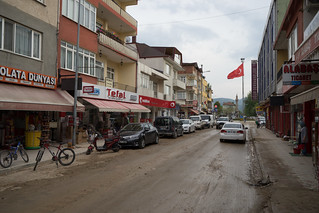
We found a wonderful campsite just past the lake in one of these groves, away from the main road and looking rather untended. We woke up to a light drizzle, but it cleared up as we finished what we now think is the only flat road in Turkey and started to climb. This was the first real test: we are out of shape, we’re using new setups (breaking a cardinal rule of bike touring), and we are carrying way too much stuff. Nonetheless, we gained about 4,000 feet and wanted to go further, but when we stopped to try to buy food for dinner, we couldn’t find a market; instead we were convinced to eat, and then camp, at a roadside restaurant run by a man called Tarzan Ali. Part of what sealed the deal was the English-speaking man who suddenly emerged: Mehmet, Tarzan’s brother, who had just gotten back from visiting his son in Palo Alto. He was excited to meet people from the Bay Area, and he called up his son who had a short conversation with David. Suddenly the world was feeling a lot smaller. In the middle of dinner (which they refused to let us pay for), the call to prayer rang out and Mehmet excused himself to go to the mosque. His sister Fatima stayed at the table with us, and we had a relatively substantive conversation in Turkish (and charades), thanks to our phrasebook.
Our plans to leave early to make up for the short day before were foiled when we woke to heavy rain. We slept in until it slowed down, had another cup of tea from Tarzan, and continued up the road. This was a rough day; we had trouble finding food at one point, and it seemed as if the old men at the entrance to one village were shooing us away. It turned out that they were just telling us there was no market there, but their lack of smiles – and our inability to communicate – made us feel a bit off. We eventually found a little market down the road, run by a friendly old man and his adorable grandchildren. The kids got their bikes out to show us and they also let us use their wifi, which was helpful for setting up places to stay in Ankara. Part of the reason we hadn’t ridden far the first couple of days was because we had to take long breaks to do general housekeeping – setting up hosts, looking into visas, attending to business back home.
We got extremely muddy that night, as it had just rained and the only place we could find to camp required a trek down a mucky side road. The next day, however, was awesome. We started with a long, gradual descent through the town of Nallihan, then climbed over a small pass. When we descended the other side, the landscape changed completely.
Gone were the damp green mountains, replaced by red and white sedimentary rock folded over itself every which way. In between these rocky outcrops were bright green wheat fields. Later in the ride we saw sprinklers, but initially it appeared to be rain-fed. We knew there was a reservoir on the route, so we were excited when we saw water and large transmission lines stretching in several directions. We never actually saw the dam, though. Instead, we came upon a wetland teeming with birds – the dam has created an artificial wetland that is now a protected ‘bird paradise.’ There was a walking trail and educational exhibits, including spotting scopes and placards explaining bird anatomy. It was lovely – despite our knee-jerk reaction to dams and what they do to habitat – and we wished we could have camped there.
It was too early to stop, though, and we continued on and soon passed through a construction zone – neither the first nor the last. Turkey is building like crazy, both in the cities and the countryside. We turned a corner and saw smokestacks in the distance, and suddenly it became clear where the transmission lines were coming from. A coal-fired power plant was on the side of the road, with operations barely concealed behind a chain-link fence stretching on for a kilometer or two. It was fascinating to see coal transported along conveyer belts, dropping through chutes, and ultimately making its way to the plant. At the entrance David was told not to take photos, but the rest of the operation was clearly visible from the road. After several more hours of climbing, we passed through the town of Beypazar and found a place to camp for the night. It was there that we discovered that we were missing a tent pole, left behind by accident at the muddy campsite the night before. Fortunately David was able to rig something with a tripod and it didn’t rain, so we were fine. However, the next morning the stove stopped working. It had been hissing and not very hot the night before, and it gave up the ghost that morning. I think the fuel line is clogged and hope to sort it out in Ankara. It’s psychologically tough to have equipment problems this early in the trip, but they are fixable.
Our final day was equally long, but not as eventful – instead of wetlands and power plants, we had lots of climbing and then 20km or so getting into Ankara. We followed a brand new 4-lane highway with a wide shoulder and surprisingly few cars, but they were moving quickly. Eventually we were able to turn off and wind through almost equally unpleasant city streets to the house of our Warm Showers host, Deniz. We met his 3 cats, looked at a map to learn where the camping and bike stores are, had a shower and dinner, and collapsed.
From Istanbul to Ankara was 430 km (270 miles) with 5,000 m (17,000 feet) of climbing. Not a crazy ride, but doing it in five days on heavy bikes, with basically no training, was a challenge. We have learned a thing or two about pacing ourselves and look forward to getting rid of some extra weight. We also have a lot of errands in Ankara – getting visas for the Central Asian countries, fixing the stove and tent, finding hosts along the route ahead, writing blog posts, and editing photos and video. It was a good introduction to Turkey. Riding from modern and touristy Istanbul through the countryside was like stepping back in time. People have been helpful and friendly, and our (extremely limited) Turkish is improving, but communication is a major challenge, especially in such a different culture. We are getting used to the call to prayer 5 times a day, but we are still adjusting to the range of conservativeness – particularly in how women dress – and I’m still figuring out what I feel most comfortable wearing when in small towns. We’re breaking for a week in Ankara to get our visas and meet with people working in the environmental sector, and then we’ll ride towards Cappadocia and the southeast. We’re looking forward to seeing more of Turkey!







